June 9th, 2021
 With the ongoing pandemic, you have likely noticed that shipping times, even for Amazon Prime orders that are fulfilled directly by Amazon themselves, have increased exponentially within the past few months. This has provided a challenging scenario for many sellers who use FBA (Fulfilment by Amazon), because the Prime promise is not always honored and this takes its toll on customer expectations.
With the ongoing pandemic, you have likely noticed that shipping times, even for Amazon Prime orders that are fulfilled directly by Amazon themselves, have increased exponentially within the past few months. This has provided a challenging scenario for many sellers who use FBA (Fulfilment by Amazon), because the Prime promise is not always honored and this takes its toll on customer expectations.As a result, many sellers are turning to the Fulfillment By Merchant (FBM) option to take control of their inventory, fulfillment, and shipping options. As of 2020, approximately 34% of Amazon sellers use FBM, and 28% of Amazon sellers use both FBA and FBM. While FBA is an amazing program for some sellers, it isn’t the only profitable option out there. The FBA and the FBM business models are full of many variables, choosing the right option for you will depend on the scale or size of your business, the products in your catalog, and your own vision, goals, strategies, and long-term plan for your business.
What is Amazon FBM and Seller Fulfilled Prime?
The two types of merchant-fulfilled operations that you can choose to be a part of as a seller using the Amazon FBM program are the standard Fulfillment by Merchant option or Seller Fulfilled Prime.
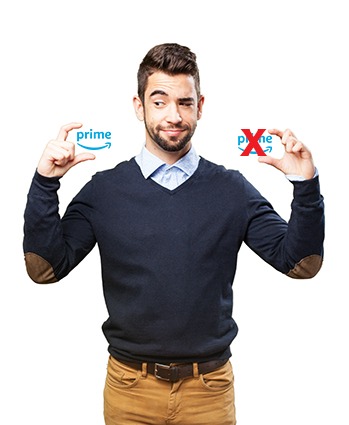 Fulfillment by Merchant, or FBM as it is most commonly known, is a fulfillment method in which an Amazon seller is responsible for fulfilling their products purchased on Amazon. Amazon FBM is managed through a seller directly or by using a third-party logistics (3PL) provider.
Fulfillment by Merchant, or FBM as it is most commonly known, is a fulfillment method in which an Amazon seller is responsible for fulfilling their products purchased on Amazon. Amazon FBM is managed through a seller directly or by using a third-party logistics (3PL) provider.
Seller Fulfilled Prime allows you to benefit from the coveted Amazon Prime badge, as long as you adhere to the requirements for qualifying as an SFP seller. This option allows you to deliver directly to domestic Prime customers from your own warehouse. By displaying the Prime badge, you are committing to fulfill orders with Two-Day Delivery at no additional charge for Prime customers. Amazon gives you access to the right transportation solutions to help you meet the high bar for the Prime customer experience.
The Benefits of Participating in Seller Fulfilled Prime
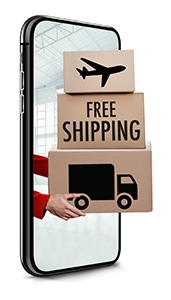 Seller Fulfilled Prime made its big debut in 2015. The fact that this shipping option offers sellers the chance to add the Amazon Prime badge to their listings in exchange for commitment to deliver the products to Prime customers with the same fast and free shipping that traditional Prime does has made it an increasingly popular option for sellers who want to maintain greater control over their order fulfillment and customer service.
Seller Fulfilled Prime made its big debut in 2015. The fact that this shipping option offers sellers the chance to add the Amazon Prime badge to their listings in exchange for commitment to deliver the products to Prime customers with the same fast and free shipping that traditional Prime does has made it an increasingly popular option for sellers who want to maintain greater control over their order fulfillment and customer service.
Although meeting the requirements to qualify as an Amazon Seller Fulfilled Prime seller can seem intimidating and rigorous, the advantages far outweigh the disadvantages. Sellers who have the coveted Prime badge tend to have higher profits than those who do not, SFP tends to be cheaper in the long run than FBA, and SFP gives you much more control over things like inventory, fulfillment, and shipping options while giving you the chance to take advantage of Amazon’s customer service.
Key Differences Between Seller Fulfilled Prime (SFP) and Fulfillment by Amazon (FBA):
 Seller Fulfilled Prime
Seller Fulfilled Prime
- As a seller you keep all of your stock in your own warehouse or the warehouse of your choice via a 3rd party provider.
- As a seller, you are free to choose from your own network of shipping carriers, which can be beneficial especially if you secure lower shipping rates.
- You can sell non-FBA eligible items under the Prime badge.
- You avoid accruing costly FBA storage fees and penalties associated with excess inventory.
Fulfilment by Amazon
- As a seller, you prep and ship your products to the fulfillment center(s) rather than sending them directly to the customer.
- Your inventory will be listed with the Prime logo.
- Amazon handles packing, delivery, customer service and returns.
- Pay as you go. Amazon charges sellers for the storage space they use and the orders Amazon fulfills on their behalf.
- Cost of shipping is included in the FBA fees.
Will Going the FBM Route Impact My Buy Box?
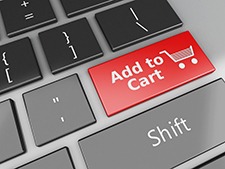
Your products listed with Seller Fulfilled Prime have increased chances to win the Buy Box. Winning the Buy Box means that when customers click on “Add to Basket”, their default option is to buy the product from you. With the Buy Box accounting for approximately 82% of all sales, a higher chance at winning the Buy Box is crucial to your success as a seller, and SFP can help you get an edge on your competition if you play your cards right.
Weighing the Pros and Cons of Amazon FBM
While Amazon FBM is not for every seller and every product, it tends to be a smart choice for products that are unique to your catalog and have little competition on Amazon as well as items that move infrequently or in low volumes, and those items that have lower profit margins. For products that fit this criteria, you can potentially save money by avoiding the costly storage fees and penalties that FBA typically incurs, especially if your product or products have a low turnaround rate.
FBA shipping fees can also add up as they greatly depend on the weight and dimensions of the product in question, so if you as a seller can find a shipping partner that can ship your product for a lower price than the FBA option, then Amazon FBM is a great way to cut down on expenses. Another benefit of going the FBM route is that you will face less unexpected changes in Amazon fulfillment pricing and policies, which FBA sellers deal with frequently.
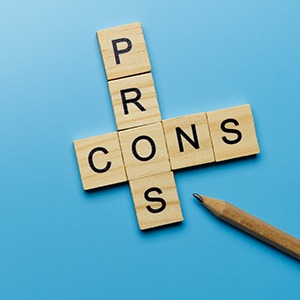 Just to recap, FBM is an ideal option if the following applies:
Just to recap, FBM is an ideal option if the following applies:
- Your item is an exclusive product that has a low turnaround rate and low demand
- Your item has low profit margins
- Your product can be shipped at a lower cost than Amazon FBA would be able to offer
FBA is more suited for sellers who fulfill the following criteria:
- Your item has a high turnaround rate and you sell at a higher than normal volume
- You don’t mind lowering the cost to the lowest possible profit point
The Cost of Doing Business via FBM and SFP
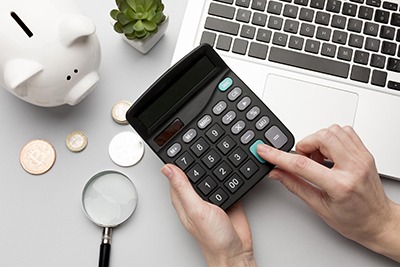 One of the biggest benefits of choosing FBM is that there are few initial costs which makes it a lot less financially stressful for your business to get off of the ground. Amazon FBM fees are typically only the costs that sellers incur by shipping orders themselves. These charges, however, will vary greatly from seller to seller, and largely depend on your catalog and the shipping and delivery options that you choose.
One of the biggest benefits of choosing FBM is that there are few initial costs which makes it a lot less financially stressful for your business to get off of the ground. Amazon FBM fees are typically only the costs that sellers incur by shipping orders themselves. These charges, however, will vary greatly from seller to seller, and largely depend on your catalog and the shipping and delivery options that you choose.
In addition to these costs, there are a few fixed fees affiliated with an FBM account. To get started with FBM, you can either choose an Individual Selling Plan, free of charge, or you can upgrade to the Pro plan, which is $39.99 per month and unlocks key features like A+ Content and important metrics that are not available with the free plan. There is also a referral fee that Amazon deducts each time a product unit is sold, which is a percentage of the total sales price and is typically around 15% for most categories. The range can vary greatly, however, with certain categories ranging from 6% to a whopping 45% for Amazon Device Accessories.
Is FBA Cheaper Than FBM?
Amazon FBA takes a 10-20% fee on every transaction and, although these fees vary slightly depending on the product in question, this should be taken into account when considering the cost of both options. Small businesses that are not in a position to pay all of the associated FBA fees may find that FBM is a more affordable option, especially while getting your Amazon business up and running. With FBM, sellers have control of packaging and shipping options, however, more time will be spent on customer service if the FBM route is chosen.
How to Qualify for Amazon Seller Fulfilled Prime:
![]() Offer your customers premium shipping options
Offer your customers premium shipping options
![]() Maintain a 99% on-time shipping rate by shipping at least 99% of your orders within the designated time frame
Maintain a 99% on-time shipping rate by shipping at least 99% of your orders within the designated time frame
![]() Maintain an order cancellation rate of less than 0.5%
Maintain an order cancellation rate of less than 0.5%
![]() Use Amazon Buy Shipping Services for at least 99% of orders
Use Amazon Buy Shipping Services for at least 99% of orders
![]() Deliver your orders with Amazon supported Seller Fulfilled Prime carriers
Deliver your orders with Amazon supported Seller Fulfilled Prime carriers
![]() Agree to the Amazon Returns Policy
Agree to the Amazon Returns Policy
![]() Allow for all customer service inquiries to be dealt with by Amazon
Allow for all customer service inquiries to be dealt with by Amazon
Can I Participate in Both FBM and FBA Simultaneously?
Can’t choose between Amazon FBM and Amazon FBA? Do both! Many sellers choose to enroll their most popular products and best-sellers in FBA, while FBM is a great choice if your product tends to sit or only has seasonal appeal. By opting to participate in both programs, you can optimize your margins and avoid the costly inventory fees that Amazon inflicts when a certain product sits too long at an Amazon warehouse.
Understanding the best way to ship your products is a huge part of your business plan. We can help you navigate the options and determine the best option for you products. Simply follow this link and fill out the form. From there we will send you an email to schedule your time.
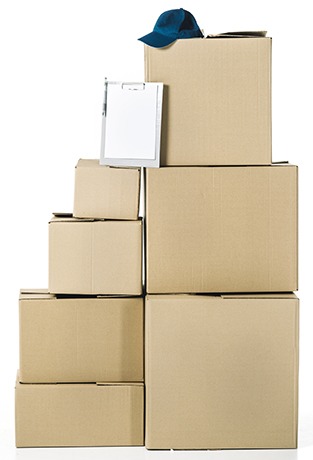 Seller Fulfilled Prime
Seller Fulfilled Prime